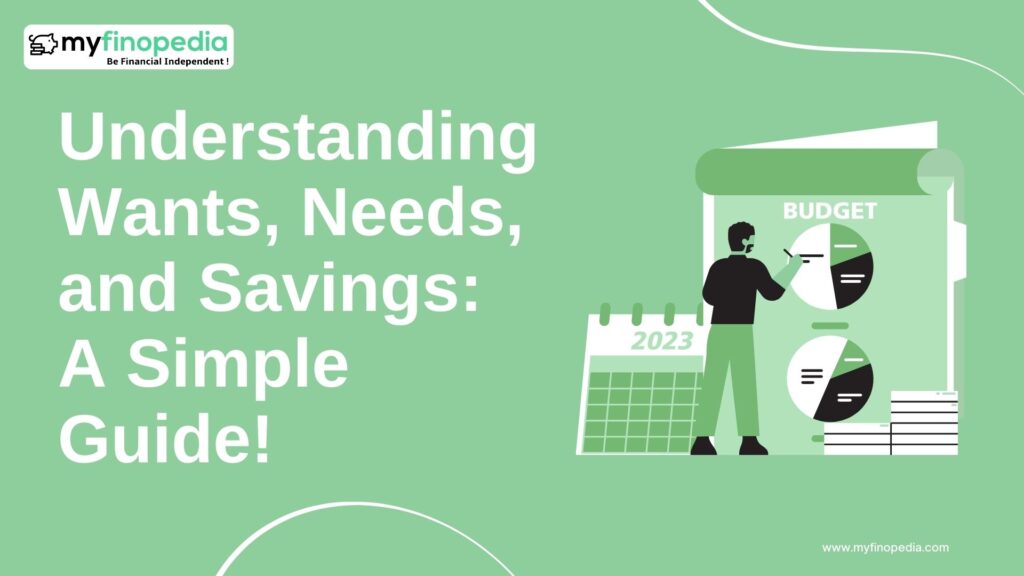In our journey through life, we often find ourselves juggling various aspects of financial well-being. Three critical elements that come into play are “Wants,” “Needs,” and “Savings.” Each plays a distinct role in our financial landscape, shaping our present and future. Let’s explore these concepts in-depth, starting with the basics.
Wants: Desires That Add Essence to Life
Wants are those desires or cravings that make life enjoyable and exciting. They include everything from the latest smartphone to a dream vacation in a tropical paradise. Wants are not essential for survival but add pleasure or comfort to our lives. These can include gadgets, fashion items, dining at fancy restaurants, or even leisure activities like going to the movies.
It’s crucial to understand that wants are subjective and can vary greatly from person to person. What one person considers a want might be a need for someone else. Managing wants wisely involves finding a balance between indulging in pleasures and maintaining financial stability.
Needs: The Essentials of Living a Life
Needs are the fundamental requirements for survival and well-being. These non-negotiable aspects of life include food, clothing, shelter, healthcare, and education. Needs provide the foundation upon which we build our lives. Meeting these basic requirements ensures our health, safety, and ability to function in society.
Needs can be categorized into two types: primary and secondary. Primary needs are the absolute essentials, such as food and shelter. Secondary needs, like education and healthcare, support our personal and professional growth. It’s important to prioritize these necessities when managing your finances, as they form the core of your financial stability.
Savings: Building a Financially Safe Future
Savings are the portion of our income that we set aside for future use. This is where we accumulate resources to fulfill our wants and needs while also preparing for unexpected expenses and long-term goals. Savings provide a sense of security and financial freedom, allowing us to have a safety net when times get tough and enabling us to pursue our dreams.
There are various forms of savings, including emergency funds, retirement accounts, and investment portfolios. Each serves a specific purpose in safeguarding your financial future. Emergency funds cover unexpected expenses, retirement accounts secure your golden years, and investments generate wealth over time. Establishing a savings plan is a crucial step toward financial stability and achieving your goals.
The Partition Between Wants, Needs, and Savings
Balancing wants, needs, and savings is a delicate art. It requires thoughtful consideration and discipline to make informed financial decisions. Here’s how they interact:
1. Prioritization– Needs should always be the top priority. Allocate a portion of your income to cover essential expenses like housing, food, and healthcare before indulging in wants.
2. Budgeting– Create a budget to manage your finances effectively. Allocate a reasonable portion of your income to wants while ensuring you save for both short-term and long-term goals.
3. Delayed Gratification– It’s essential to differentiate between immediate wants and long-term desires. Delaying gratification on some wants can help you save for bigger goals in the future.
4. Emergency Fund– Start building an emergency fund to handle unexpected expenses without dipping into your savings or going into debt.
5. Invest for Growth-Consider investments to make your money work for you. Investments have the potential to grow your wealth over time, helping you achieve financial freedom.
6. Regular Review-Periodically reassess your financial goals, wants, and needs. Adjust your budget and savings plan accordingly to stay on
Concluding: The Art of Balancing Needs, Wants and Savings
In summary, wants, needs, and savings are the three pillars of financial well-being. Wants add spice to life, needs are the essentials, and savings secure your future. Achieving a balance between these aspects is the key to financial harmony. Remember, it’s not about depriving yourself of wants but making informed choices that align with your financial goals. By understanding and managing these elements wisely, you can embark on a journey toward financial stability and the pursuit of your dreams.






